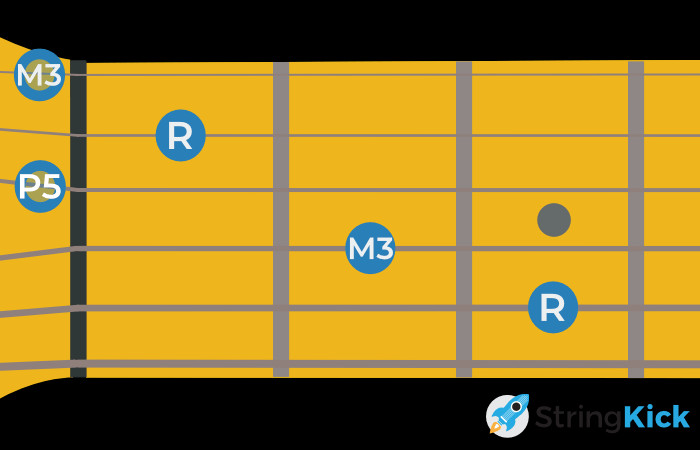So, you’ve grasped what music intervals are and even practiced playing them on your guitar. That’s fantastic! But now comes the crucial question: how can we actually use music intervals in our guitar playing and musical understanding? Why are they so important?
The truth is, understanding music intervals unlocks a deeper understanding of music itself. They are truly the foundational building blocks, essential for everything from deciphering chords and scales to crafting compelling chord progressions and melodies.
Let’s dive into a practical example to illustrate this. We’ll explore how interval knowledge empowers you to understand chord construction. If you’re newer to intervals, don’t worry if every detail isn’t immediately clear. The key takeaway here is to see intervals in action as the components of chords.
As guitarists, we know chords have different “flavors.” Some sound bright and major, while others evoke a darker, minor feel. What dictates this “mood”? It boils down to the specific “recipe” of each chord type. And guess what? That recipe is written in intervals!
For instance, the fundamental recipe for a major chord is:
- Root note
- Major third
- Perfect fifth
Let’s break down how this works on the guitar fretboard and construct a C major chord using our interval knowledge.
We begin with the root note. This is the anchor of the chord, giving the chord its name. For a C major chord, our root must be a C note. Let’s find a C on the A string, which is located at the 3rd fret.
This root note is our starting point. From this C, we’ll add the other “ingredients” from our major chord recipe.
First, we need to add a note that is a major third interval above our root.
 Guitar fretboard diagram showing a C root note and a major third interval above it to create part of a C major chord.
Guitar fretboard diagram showing a C root note and a major third interval above it to create part of a C major chord.
Next, to complete our major chord recipe, we need to add a note that is a perfect fifth interval above the root note.
And just like that, by playing these three notes together, you’ve created a C major chord!
Now, you might be thinking, “Wait, that’s not the C chord I usually play!” And you’re right, guitarists often play a fuller C chord using more strings. But those additional strings aren’t introducing new interval “ingredients” into our chord recipe. Let’s examine a common open C chord shape:
 Guitar fretboard diagram showing an open C chord with intervals overlaid, illustrating root, major third and perfect fifth relationships.
Guitar fretboard diagram showing an open C chord with intervals overlaid, illustrating root, major third and perfect fifth relationships.
As you can see, those extra strings simply reinforce the existing intervals, adding another root note and another major third, just at higher octaves. They are the same core ingredients, just repeated.
So, intervals are clearly key to understanding chord construction. But their utility extends far beyond just chords. They are equally vital for understanding melodies, scales, and chord progressions. Every melody you love, every scale you practice, and every chord progression that moves you is built upon the relationships defined by music intervals.
To explore how intervals underpin melody construction, consider checking out a resource like Music Theory from Scratch. Understanding intervals is the first step to truly mastering the fretboard and unlocking your musical potential.
Get the free interval lessons
“I took your free interval course and learned more about theory in 5 minutes than in a year. The way you explained things just clicked for me.” – Miranda
The next step in your musical journey is to discover the most effective methods for learning and internalizing intervals. That’s what we’ll explore in the subsequent sections.

